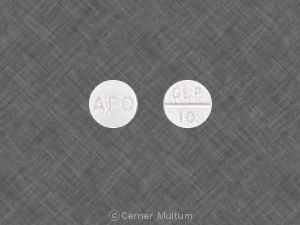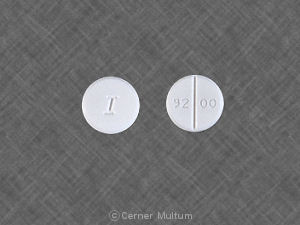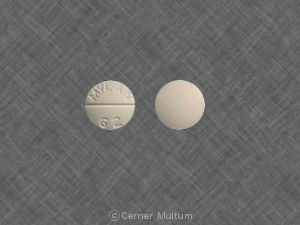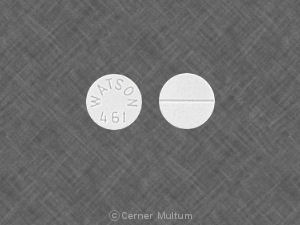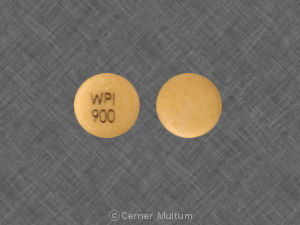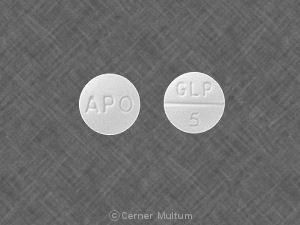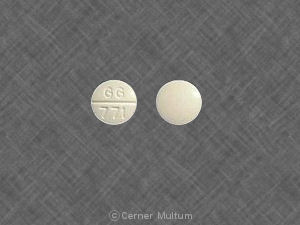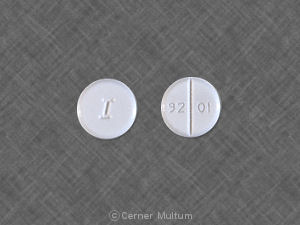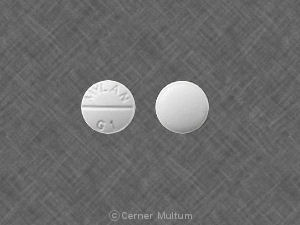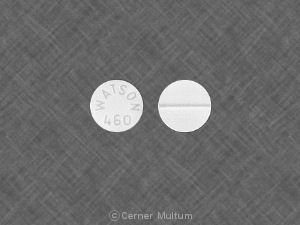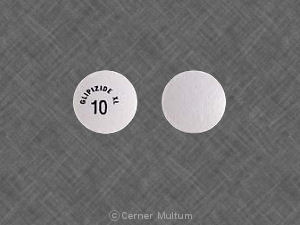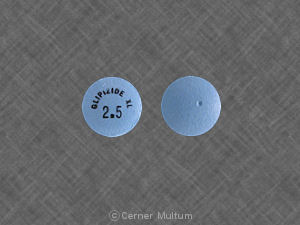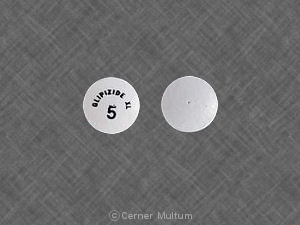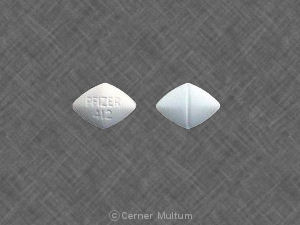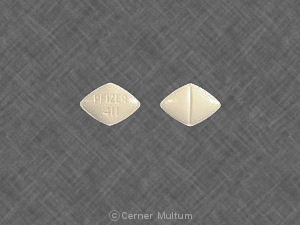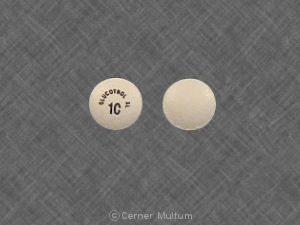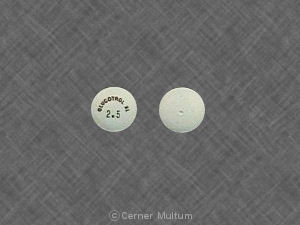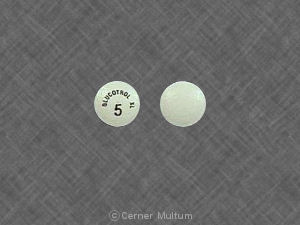What is the most important information I should know about glipizide?
You should not use glipizide if you are in a state of diabetic ketoacidosis (call your doctor for treatment with insulin).
What is glipizide?
Glipizide is an oral diabetes medicine that helps control blood sugar levels by helping your pancreas produce insulin.
Glipizide is used together with diet and exercise to improve blood sugar control in adults with type 2 diabetes mellitus. Glipizide is not for treating type 1 diabetes.
Glipizide may also be used for purposes not listed in this medication guide.
What should I discuss with my healthcare provider before taking glipizide?
You should not use this medicine if you are allergic to glipizide, or if you have diabetic ketoacidosis (call your doctor for treatment with insulin).
To make sure glipizide is safe for you, tell your doctor if you have ever had:
- liver or kidney disease;
- chronic diarrhea or a blockage in your intestines;
- an enzyme deficiency called glucose-6-phosphate dehydrogenase deficiency (G6PD);
- a disorder of your pituitary or adrenal glands;
- heart disease; or
- if you are malnourished.
It is not known whether glipizide will harm an unborn baby. Similar diabetes medications have caused severe hypoglycemia in newborn babies whose mothers had used the medication near the time of delivery. Tell your doctor if you are pregnant or plan to . while using this medication.
It is not known whether glipizide passes into breast milk or if it could harm a nursing baby. You should not breast-feed while using this medicine.
How should I take glipizide?
Follow all directions on your prescription label. Your doctor may occasionally change your dose. Do not take this medicine in larger or smaller amounts or for longer than recommended.
Take glipizide 30 minutes before a meal. If you take glipizide once daily, take it 30 minutes before breakfast.
Glipizide extended-release (Glucotrol XL) should be taken with breakfast.
Do not crush, chew, or break an extended-release tablet. Swallow it whole.
Your blood sugar will need to be checked often, and you may need other blood tests at your doctor's office.
Low blood sugar (hypoglycemia) can happen to everyone who has diabetes. Symptoms include headache, hunger, sweating, irritability, dizziness, nausea, fast heart rate, and feeling anxious or shaky. To quickly treat low blood sugar, always keep a fast-acting source of sugar with you such as fruit juice, hard candy, crackers, raisins, or non-diet soda.
Your doctor can prescribe a glucagon emergency injection kit to use in case you have severe hypoglycemia and cannot eat or drink. Be sure your family and close friends know how to give you this injection in an emergency.
Also watch for signs of high blood sugar (hyperglycemia) such as increased thirst or urination, blurred vision, headache, and tiredness.
Blood sugar levels can be affected by stress, illness, surgery, exercise, alcohol use, or skipping meals. Ask your doctor before changing your dose or medication schedule.
Some forms of glipizide are made with a shell that is not absorbed or melted in the body. Part of the tablet shell may appear in your stool. This is a normal side effect and will not make the medication less effective.
Glipizide is only part of a complete treatment program that may also include diet, exercise, weight control, regular blood sugar testing, and special medical care. Follow your doctor's instructions very closely.
Store at room temperature away from moisture, heat, and light.
What happens if I miss a dose?
Take the missed dose 30 minutes before your next meal, then return to your regular schedule. Skip the missed dose if it is almost time for your next scheduled dose. Do not take extra medicine to make up the missed dose.
Use glipizide regularly to get the most benefit. Get your prescription refilled before you run out of medicine completely.
What happens if I overdose?
Seek emergency medical attention or call the Poison Help line at 1-800-222-1222. A glipizide overdose can cause life-threatening hypoglycemia.
Symptoms of severe hypoglycemia include extreme weakness, blurred vision, sweating, trouble speaking, tremors, stomach pain, confusion, and seizure (convulsions).
What should I avoid while taking glipizide?
Avoid drinking alcohol. It lowers blood sugar and can cause side effects.
Avoid driving or operating machinery until you know how this medicine will affect you.
What are the possible side effects of glipizide?
Get emergency medical help if you have signs of an allergic reaction: hives; difficulty breathing; swelling of your face, lips, tongue, or throat.
Call your doctor at once if you have symptoms of low blood sugar:
- headache, irritability
- sweating, fast heart rate;
- dizziness, nausea; or
- hunger, feeling anxious or shaky.
Common side effects may include:
- mild nausea;
- diarrhea, constipation;
- dizziness, drowsiness; or
- skin rash, redness, or itching.
This is not a complete list of side effects and others may occur. Call your doctor for medical advice about side effects. You may report side effects to FDA at 1-800-FDA-1088.
What other drugs will affect glipizide?
Sometimes it is not safe to use certain medications at the same time. Some drugs can affect your blood levels of other drugs you take, which may increase side effects or make the medications less effective.
Many drugs can interact with glipizide. This includes prescription and over-the-counter medicines, vitamins, and herbal products. Not all possible interactions are listed in this medication guide. Tell your doctor about all your current medicines and any medicine you start or stop using.
Where can I get more information?
Your pharmacist can provide more information about glipizide.
Remember, keep this and all other medicines out of the reach of children, never share your medicines with others, and use this medication only for the indication prescribed.
Every effort has been made to ensure that the information provided by Cerner Multum, Inc. ('Multum') is accurate, up-to-date, and complete, but no guarantee is made to that effect. Drug information contained herein may be time sensitive. Multum information has been compiled for use by healthcare practitioners and consumers in the United States and therefore Multum does not warrant that uses outside of the United States are appropriate, unless specifically indicated otherwise. Multum's drug information does not endorse drugs, diagnose patients or recommend therapy. Multum's drug information is an informational resource designed to assist licensed healthcare practitioners in caring for their patients and/or to serve consumers viewing this service as a supplement to, and not a substitute for, the expertise, skill, knowledge and judgment of healthcare practitioners. The absence of a warning for a given drug or drug combination in no way should be construed to indicate that the drug or drug combination is safe, effective or appropriate for any given patient. Multum does not assume any responsibility for any aspect of healthcare administered with the aid of information Multum provides. The information contained herein is not intended to cover all possible uses, directions, precautions, warnings, drug interactions, allergic reactions, or adverse effects. If you have questions about the drugs you are taking, check with your doctor, nurse or pharmacist.
Copyright 1996-2018 Cerner Multum, Inc. Version: 10.01. Revision date: 12/27/2017.
